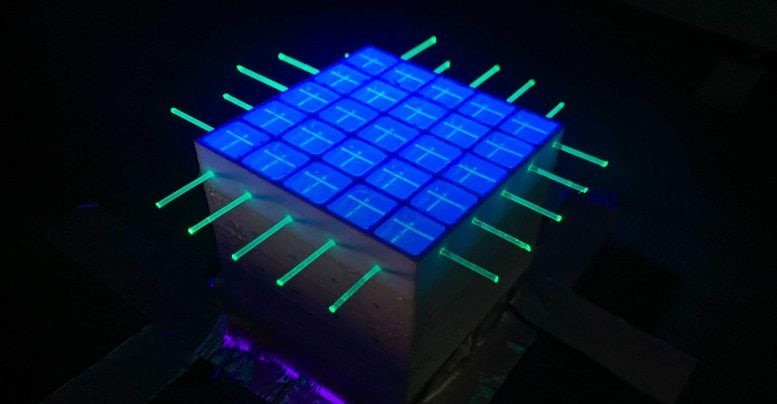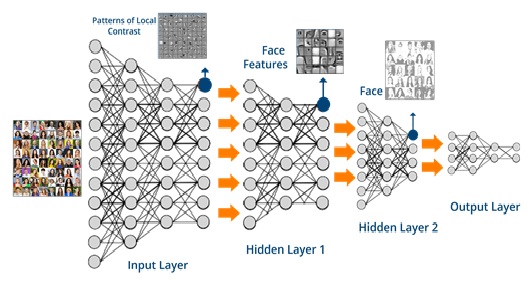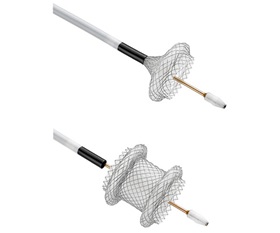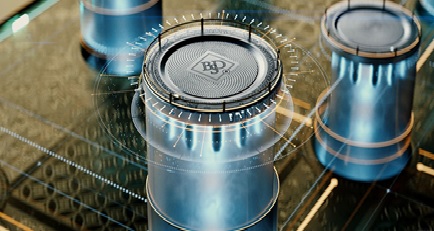Scientists 3D-Print The Next Generation of Particle Detectors
Overcoming the Challenges of Large-Scale Particle Detectors
This question drives the research of Professors Davide Sgalaberna and André Rubbia from the Institute for Particle Physics and Astrophysics. Collaborating with scientists from ETH Zurich, CERN, the HES-SO, the HEIG-VD, COMATEC-AddiPole, and the Institute for Scintillation Materials in Ukraine, they recently published a study in Communications Engineering. Their work introduces a fully 3D-printed plastic scintillator detector for elementary particles, developed as part of the 3D Printed DETector (3DET) Collaboration, led by Sgalaberna with technical coordination from Dr. Umut Kose. This breakthrough marks a significant step toward faster, more cost-effective production of large-scale particle detectors, shaping the future of neutrino science.

Figure 1. 3D-Printed Particle Detectors: The Future of Discovery.
Engineering Challenges in Particle Tracking
Plastic scintillator (PS) detectors play a crucial role in tracking the paths and energy loss of charged particles with rapid temporal response. Since their introduction in the 1950s, their effectiveness has driven widespread adoption. In a PS detector, fluorescent emitters (fluors) are embedded within a solid polymer matrix. When a charged particle moves through the material, it excites the polymer, transferring energy to the fluors through a non-radiative dipole-dipole interaction. The fluors then de-excite, emitting near-ultraviolet light within nanoseconds. A secondary fluor is often added to shift this light’s wavelength, preventing reabsorption within the scintillator. Optical fibers then shift the emitted light further into the green spectrum, trapping it and extending its attenuation length. Figure 1 shows 3D-Printed Particle Detectors: The Future of Discovery.
To track elementary particles with precision, granular 3D scintillating detectors are constructed from many smaller volumes—such as the PS cubes used in SuperFGD. These individual units must be optically isolated to independently track different charged particles. The 3DET Collaboration has extensive experience with these systems: Professor Davide Sgalaberna, a key member of the team, originally conceived and led the development of SuperFGD as part of the T2K Collaboration. Similar to how a laptop or smartphone screen consists of individual fluorescing pixels, a granular 3D particle detector is made up of scintillating voxels. Each voxel functions independently but contributes to the overall high-quality data output, ensuring precise particle tracking.
A Tailored Approach: Fused Injection Modeling (FIM)
Recognizing the limitations of existing additive manufacturing (AM) methods, Weber, Sgalaberna, and their colleagues developed a custom process called fused injection modeling (FIM). This technique blends two established methods—fused deposition modeling (FDM) and injection molding—to optimize the production of plastic scintillator (PS) detectors.
The FIM process unfolds in three key steps. First, a 5 × 5 layer of an optically reflective frame is created using FDM. This frame forms a mold consisting of 25 empty, top-opened, and white-coated cubes, complete with pre-formed holes for optical fibers—eliminating the need for additional support structures. The polymer filament for the frame is extruded through a nozzle, ensuring precise shaping.
Next, metal rods are inserted into the pre-formed holes to maintain pathways for the fibers. The FDM extrusion system is then swapped out for an elongated nozzle that injects scintillation material into the mold. The injection process moves from bottom to top, allowing the melted material to spread evenly within each cube.
Finally, a heated punch is applied to the top surface, ensuring a smooth and level finish, preparing the structure for the next 5 × 5 matrix layer. This novel approach enables scalable, high-precision fabrication of large-scale particle detectors while maintaining optical isolation and structural integrity.
The SuperCube: A Prototype for the Future
Using their newly developed fused injection modeling (FIM) technique, the team successfully fabricated a prototype detector known as the SuperCube. This compact detector consists of 125 optically isolated voxels arranged in a 5 × 5 × 5 configuration, with overall dimensions of 59 mm in width and length, and 57.2 mm in height. Each voxel is read out by two orthogonal wavelength-shifting fibers, ensuring precise particle tracking.
The manufacturing time for a single voxel was estimated at approximately six minutes, but this is expected to decrease with further automation of the process using an advanced 3D printing system.
To assess the SuperCube’s performance, the researchers analyzed cosmic-particle data, focusing on scintillation light yield and crosstalk between voxels. They compared their prototype to a similar detector produced via cast polymerization, a traditional manufacturing technique, and found no significant differences in performance. While crosstalk levels were slightly higher in the FIM-produced detector, they remained within an acceptable range for 3D particle tracking.
“This is the first time a 3D-printed scintillator detector has successfully detected charged particles—such as cosmic rays and test beams at CERN—and reconstructed both their tracks and energy loss,” says Sgalaberna, marking a major milestone in the development of next-generation particle detectors.
Expanding the Frontiers of Particle Physics
The team continues to refine their approach, testing new prototypes to further enhance the optical isolation of the detector’s voxels. Meanwhile, Weber is spearheading a complete redesign of the production system, aiming to develop an automated printer capable of scaling up fabrication for larger detector volumes.
As Sgalaberna highlights, increasing a detector’s voxel count from 2 million to 10 million would be a game-changer for experiments like T2K. A larger detector volume means capturing more interaction events, ultimately leading to deeper insights into particle physics. With these advancements, 3D printing technology is proving to be a key enabler—allowing researchers to push the boundaries of detector design and, quite literally, think bigger.
Source: SciTECHDaily
Cite this article:
Priyadharshini S (2025),"Scientists 3D-Print the Next Generation of Particle Detectors", AnaTechmaz, pp. 342
















